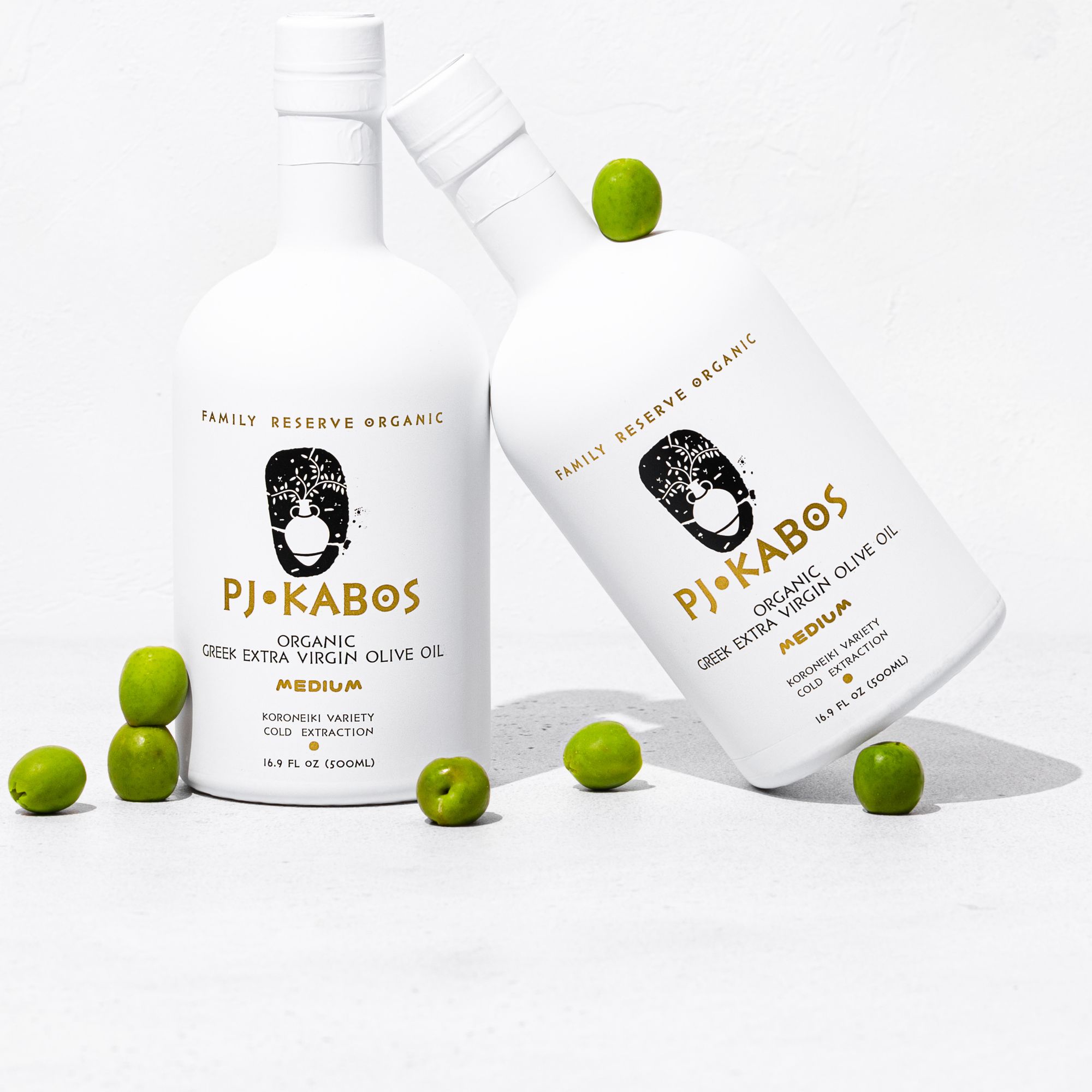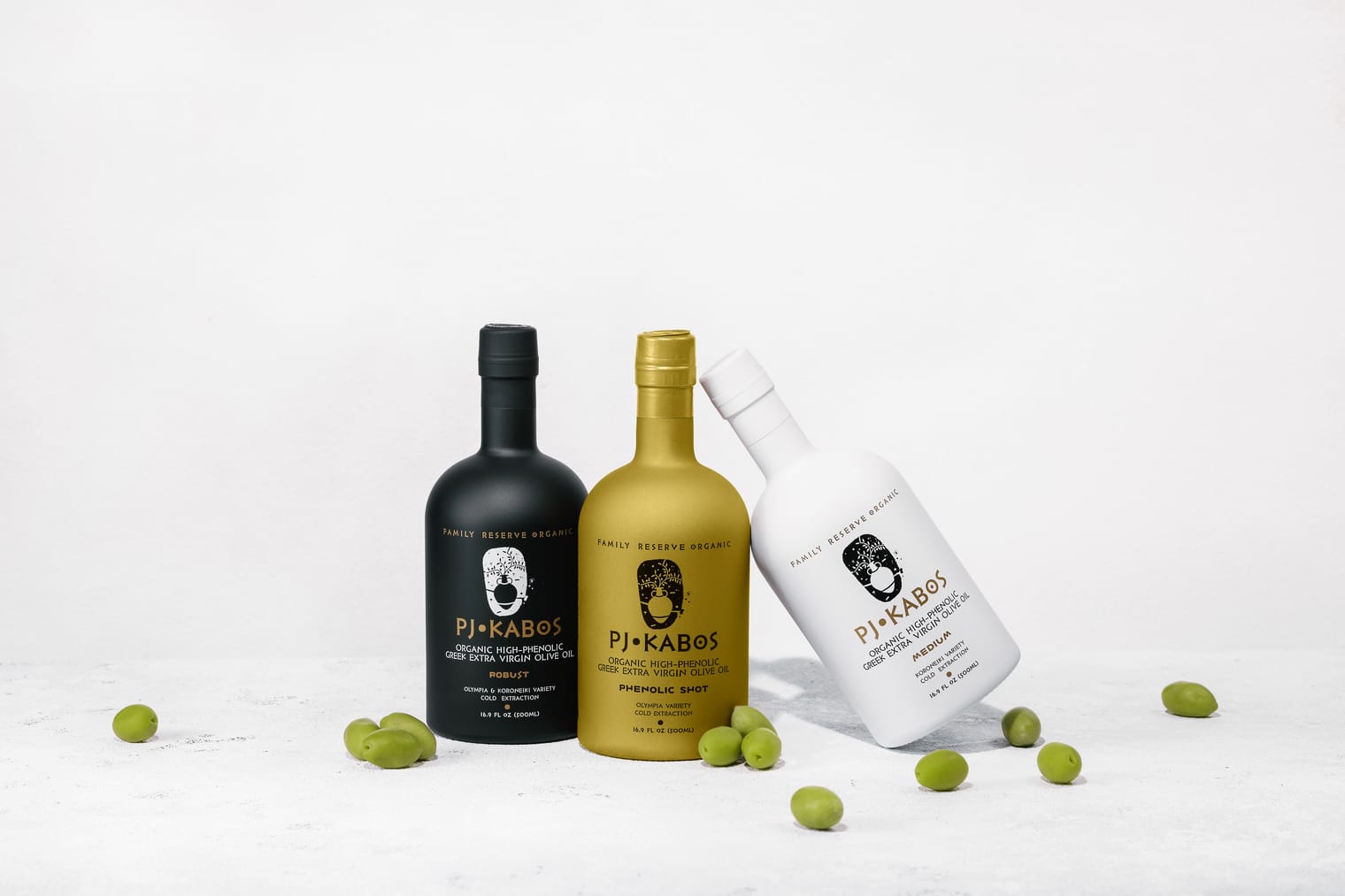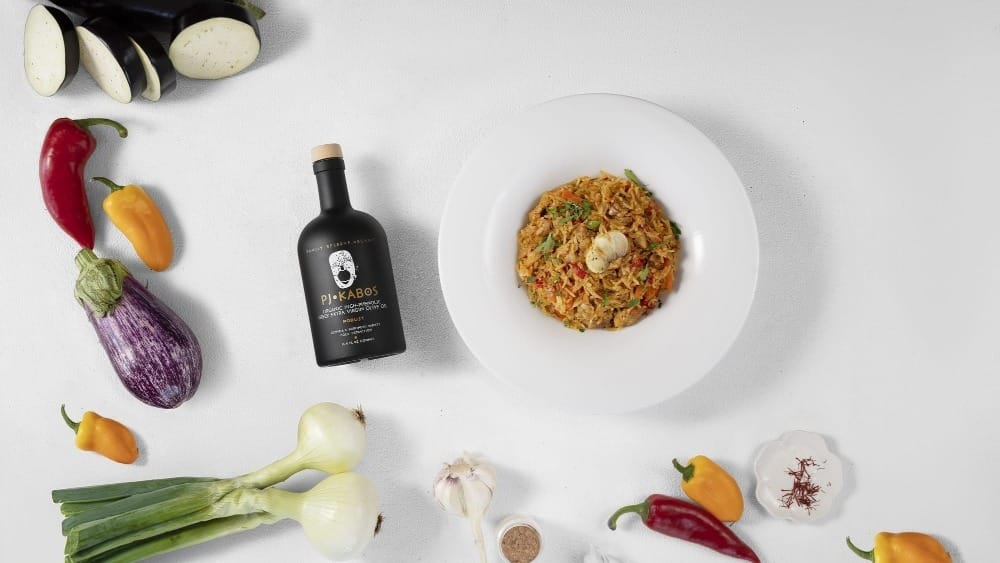Olive oil is one of the oldest, most celebrated foods on the planet. In fact, this culinary staple has been consumed for thousands of years. Way back in the day, olive oil was made by crushing olives in many ways, most often with stones mills of various types.
Today, the process has definitely been modernized in several ways, but for the highest quality, most flavorful olive oils (think: extra virgin), it’s still fundamentally the same—olives are cleaned and then crushed in a mechanical mill, without the use of heat or chemicals, and the oil is separated from solids and water (albeit nowadays using a centrifuge).
This mechanical process preserves many of olive oil’s health benefits:
- Olive oil is absolutely packed with a variety of polyphenol compounds, which have antioxidant properties.
- Thanks to its polyphenols and healthy fats, olive oil has been associated with reduced inflammation, improved heart, brain, and gut health, and more.
- It primarily consists of healthy monounsaturated fats, including anti-inflammatory oleic acid. It even has a small percentage of omega-3s.
- Olive oil contains phytosterols, which are bioactive compounds associated with reduced cholesterol and even certain types of cancer.
Olive oil differs from other popular oils such as canola oil, vegetable oil, and soybean oil in a few key ways. For one, these oils are almost always extracted and refined using very high heat and lots of chemicals, resulting in less flavor and health benefits. Plus, their fatty acid profile isn’t nearly as impressive. Olive oil, on the other hand, is potent in health benefits and flavor, making it great for use in dressings, as a dipping oil, or drizzling onto finished dishes.
In fact, any olive oil from the list below can be considered a healthier pick than most other cooking oils on the market.
That said, not all olive oil is created equal. Different types of olive oil have different health benefits, flavors, and culinary applications. Keep reading to see which type is right for your pantry!
Extra Virgin Olive Oil
Extra virgin olive oil (EVOO) is often considered the gold standard in terms of flavor and health benefits. Here’s what makes it special:
- It’s made only via mechanical methods (think: olives are pressed, the oil is separated from the pulp via centrifugation, and then the oil is filtered or racked to remove any remaining solids), and never exposed to chemicals or high heat.
- EVOO is unrefined and cold-extracted, so it maintains very high levels of bioactive compounds, including oleuropein, hydroxytyrosol, and oleocanthal, which possess anti-inflammatory, antioxidant, and anti-microbial properties.
- It ranges from green to gold in hue, with aromas from fresh green and grassy to ripe and fruity. Earlier harvest oils will have a bold peppery flavor, which you can actually feel in the back of your throat. EVOO can also be made in a milder (but still flavorful) style.
- EVOO contains modest levels of vitamin E (about 13% of your daily value per tbsp) and vitamin K (about 7% of your daily value).
- Like all types of olive oil, EVOO contains beneficial phytosterols and oleic acid.
- Regulations require that true EVOO not have any flavor defects as determined by an official taste panel.
How To Use It
To preserve the most nutrients and showcase it’s bold flavor, try using extra virgin olive oil in one of these ways:
- Salad dressings
- Dipping oil
- Finishing oil
- Some people even take a spoonful straight every morning for the health perks!
Fun fact: Contrary to popular belief, EVOO has a surprisingly high smoke point of (350 to 410 F), so these cooking styles are a-okay (just skip the deep frying!):
- Sautéing
- Roasting
- Light frying (think: frying eggs)
- Baking (in recipes where you want that classic olive oil flavor, like this Gluten Free Lemon Olive Oil Cake)
Virgin Olive Oil
Not to be confused with extra virgin olive oil, virgin olive oil is actually pretty rare and hard to find—you often won’t see it at your local grocery store. It's quite similar to EVOO, with a few minor differences:
- Virgin olive oil is still mechanically extracted (meaning, without chemicals or heat), so it contains many of the same health benefits as EVOO, including high levels of polyphenol antioxidants.
- Compared to EVOO, virgin olive oil is allowed to have some minor flavor defects, which may not even be noticeable to an untrained taster.
- Virgin olive oils range in flavor and aroma, with some varieties being even more robust than certain EVOOs.
- Like all types of olive oil, virgin olive oil contains beneficial phytosterols and oleic acid, and modest amounts of vitamin E and vitamin K.
How To Use It
If you can actually find it, you can use virgin olive oil in all the ways you’d use extra virgin olive oil but it is best suited to uses where the minor defects will not be noticed—marinades, sautéing, roasting, light frying, baking.
Pure Olive Oil or Regular Olive Oil
Along with extra virgin olive oil, pure/regular olive oil (sometimes simply labeled “olive oil”) is another common variety you’ll find in grocery stores or online. Here’s what makes it different:
- Pure/regular olive oil is a combination of refined olive oil and 15%-25% virgin olive oil. The refined oil component is treated with some heat and chemicals to remove flavor defects.
- Because the refining process does reduce levels of certain compounds, pure/regular olive oil has fewer health-boosting bioactive compounds than EVOO or virgin olive oil.
- These oils are noticeably lighter in color than EVOO, and have a much more neutral flavor and aroma.
- Pure/regular olive oil is still a good source of beneficial phytosterols and oleic acid, and contains modest amounts of vitamin E and vitamin K.
How To Use It
Many chefs consider pure olive oil a good general purpose cooking oil, since it has a higher smoke point than EVOO (around 470 F), mild flavor, and holds up well to high-heat cooking. Here are some good ways to use it:
- Sautéing
- Roasting
- Baking
- Searing
- Grilling
- Frying
- Infused oils (warm some olive oil with dried herbs or chilis to create your own flavored oil)
Regular olive oil also has some uses beyond the kitchen! Smooth it directly onto your skin, or scrub it into your scalp for an extra dose of moisture.
Light Olive Oil or Extra Light Olive Oil
Along with extra virgin olive oil and pure olive oil, the other type of olive oil you’re likely to see in grocery stores is light olive oil.
- Light and extra light olive oils are a combination of refined olive oil and 5%-10% virgin olive oil. The refined oil component is treated with some heat and chemicals to remove flavor defects.
- Because these oils have an even lower percentage of virgin olive oil than regular olive oil, their health benefits are proportionally reduced.
- Don’t confuse “light” for low in calories—in this case, light refers to the oil’s almost completely neutral flavor and aroma.
- Light and extra light olive oils are still a good source of beneficial phytosterols and oleic acid, and contain modest amounts of vitamin E and vitamin K
How To Use It
Because of its high smoke point (around 470 F), light olive oil is less likely to break down under very high temperatures—so it’s a decent option for high heat cooking methods.
- Sautéing
- Roasting
- Searing
- Grilling
- Frying
- Baking (only in recipes where you don’t want that classic olive oil flavor)
Due to its relative lack of taste, you may not want to bother using light olive oil as a dipping or finishing oil. It’s too bland to impart much flavor of its own.
Bottom Line
The wide world of olive oil can be confusing. But essentially, there are three main types of olive oil you’ll find in grocery stores or online retailers: extra virgin olive oil, pure or regular olive oil, and light and extra light olive oil.
These olive oil types have different methods of production, and thus, different health benefits and flavor profiles—giving them each unique culinary uses. Our top pick? Well, we’ll always be partial to a good EVOO, but keeping one of these other types in your pantry—particularly for high heat cooking—isn’t a bad idea either.
Product placement
PJ KABOS 'Family Reserve Organic - Medium'
High Phenolic and 2022 Gold-Award Winner.
Declared as 'One of the World's Best Olive Oils'.
Click here to shop.





